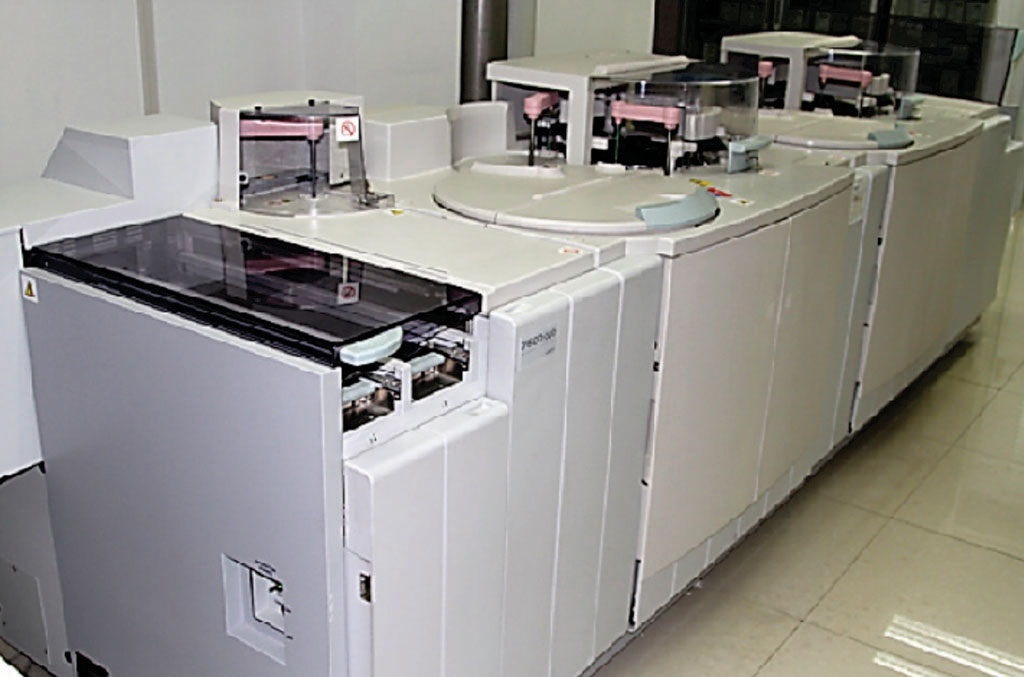Change in Serum Bilirubin Level Predicts Incident Metabolic Syndrome
By LabMedica International staff writers
Posted on 21 Dec 2016
Metabolic syndrome (MetS) is a constellation of interlinked metabolic conditions that seem to accelerate the development of cardiovascular disease. Chronic inflammation, oxidative stress, and insulin resistance all play important roles in the initiation and advancement of MetS.Posted on 21 Dec 2016
Serum bilirubin level was negatively associated with the prevalence of MetS in previous cross-sectional studies; however, bilirubin variance preceding the development of MetS has yet to be investigated. An inverse association between mean bilirubin concentrations and the number of metabolic syndrome components in a population with atherogenic dyslipidemia has been reported.

Image: The Hitachi-7600, modular DP-110 autoanalyzer (Photo courtesy of Hitachi).
Scientists at the Sungkyunkwan University School of Medicine (Seoul, Republic of Korea) conducted a retrospective longitudinal study of subjects who had undergone at least four yearly health check-ups between 2006 and 2012. Of 24,185 total individuals who received annual check-ups, 11,613 non-MetS participants with a baseline bilirubin level not exceeding 34.2 μmol/L were enrolled. Venous blood samples were obtained after an overnight fast and measurements included serum bilirubin, aspartate transaminase (AST), alanine transaminase (ALT), fasting plasma glucose, plasma insulin, triglyceride (TG), low-density lipoprotein cholesterol (LDL-C), high-density lipoprotein cholesterol (HDL-C), serum uric acid, and creatinine.
Serum bilirubin concentrations were measured using the diazonium salt/diazonium ion with blank method on a Hitachi-7600, Modular DP-110 autoanalyzer (Hitachi, Tokyo, Japan). Plasma glucose levels were determined using the hexokinase method on an Advia 1650 automated chemistry analyzer, and plasma insulin values were derived using an immunoradiometric assay. Fasting HDL-C, LDL-C, and TG were measured using the enzymatic colorimetric method with a Modular D2400.
The scientists found that during 55,407 person-years of follow-up, 2,439 cases of incident MetS developed (21.0%). There was an increased risk for incident MetS that was observed in higher percent change in bilirubin quartiles, with hazard ratios of 2.415 in men and 2.156 in women in the fourth quartile, compared to the lowest quartile, after adjusting for various variables. The hazard ratios per one standard deviation increase in percent change in bilirubin as a continuous variable were 1.277 in men and 1.366 in women.
The authors concluded that an increase in bilirubin concentration, defined as PCB, was positively associated with incident MetS in a healthy Korean population, indicating that bilirubin increase might precede the development of MetS. Positive levels of PCB may reflect an increase in oxidative stress preceding new-onset MetS. The study was published on December 9, 2016, in the journal Public Library of Science ONE.
Related Links:
Sungkyunkwan University School of Medicine
Hitachi














